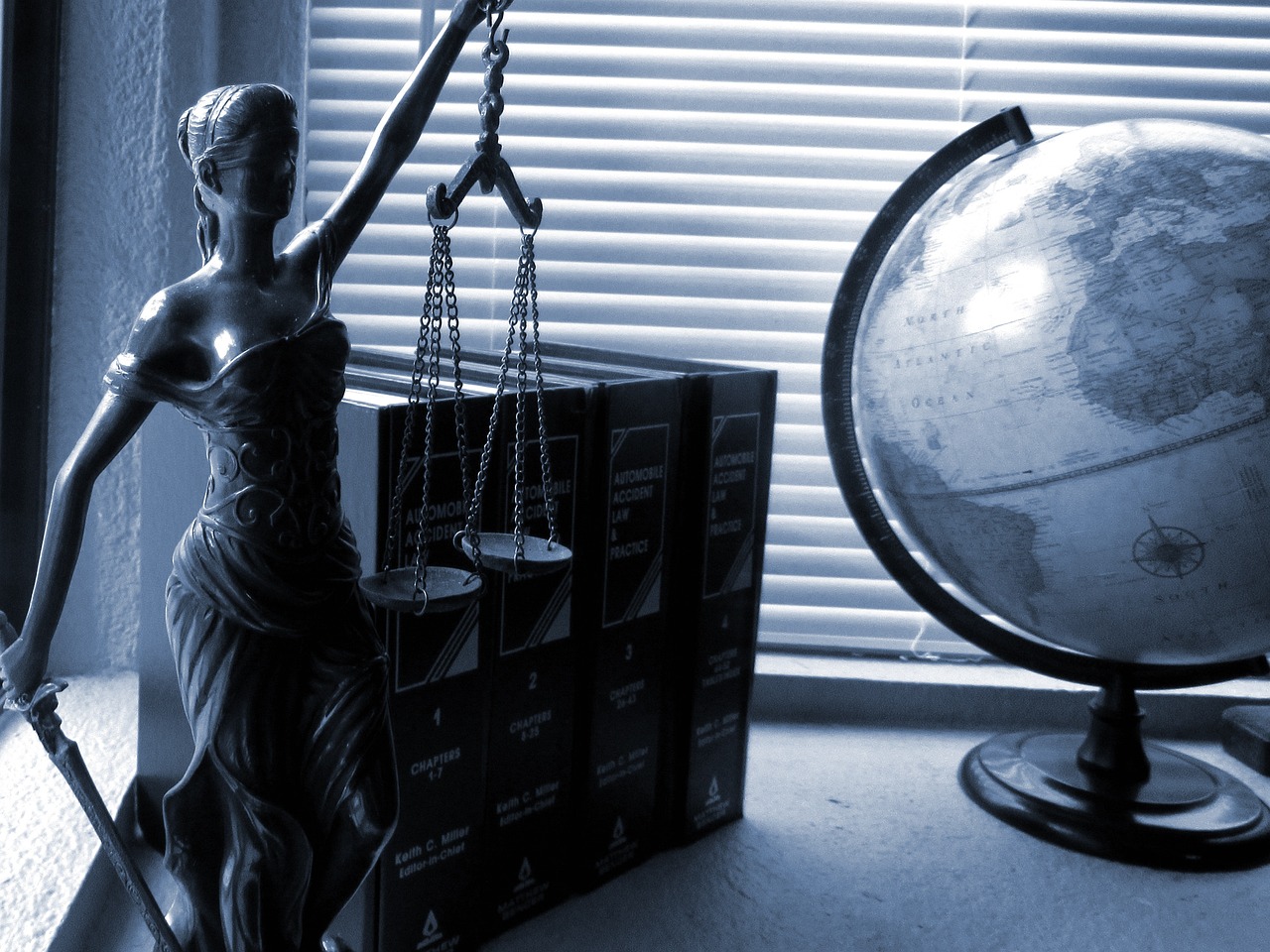Published On: 27 Aug, 2024

Authored By: Harini T
Reva University
ABSTRACT:
This article delves into the complex landscape of juvenile delinquency in India, charting the evolution of juvenile laws from the Juvenile Justice Act of 1986 to the Comprehensive Juvenile Justice (CAPOC) Act of 2015. It examines key amendments and landmark case law. Addressing critical challenges, such as the age of criminal responsibility and implementation gaps, this article assesses the effectiveness of recent reforms aimed at safeguarding juvenile rights while ensuring public safety. It advocates a rehabilitative approach to juvenile justice, highlighting the need for continuous improvements in legal frameworks and their implementation. Through an analysis of case laws and current practices, this study underscores the importance of a balanced approach that prioritizes the reformation and reintegration of juvenile offenders into society.
INTRODUCTION:
This legal classification aims to provide additional safeguards for minors in the eyes of the law, especially regarding issues of criminal justice and welfare. Rather than primarily punishing misbehavior, juvenile laws emphasize prevention, treatment, care, protection and rehabilitation to properly address transgressions by young people. Section 2(h) of India’s Juvenile Justice Act from 1986 stipulates that any boy under 16 or girl under 18 shall be designated a “juvenile” under the act. The legislation recognizes that those still developing need guidance more than harsh discipline if they stray from societal norms, in order to cultivate healthy development into adulthood. The Juvenile Justice Act of 2015 precisely outlines how “a child” refers to any person below eighteen years of age, distinguishing between youths who find themselves on the wrong side of the law and those necessitating care and shelter. India’s legal framework strives to curb juvenile misconduct while shielding the privileges of minor lawbreakers, with some sections delving deep into rehabilitation over retribution and others maintaining a delicate balance between mercy and consequences.
Background:
The Children’s Act of 1960 was put into effect first. The Act acknowledged the fundamental economic and social causes of adolescent misbehavior, including inadequate guardianship and poverty. It offered a structure for the establishment of Child Welfare Boards and courts to deal with instances involving abandoned and troubled kids, guaranteeing that these kids got the right help and assistance instead of harsh punishment.
Constitutional Provisions and Government Obligations in Juvenile Justice:
The ultimate piece of legislation, the Indian Constitution, establishes the rights and obligations of the people, guiding the functioning of governmental bodies. While Part III of the Constitution enumerates people’s fundamental rights, Part IV of the document contains the Directive Principles of State Policy, which serve as guidelines for the creation of public policy. Enacting legislation that ensures juvenile justice is the government’s duty in this regard.
The Maturation of India’s Juvenile Justice System
The Juvenile Justice Act, 1986:
The Juvenile Justice Act of 1986 brought the term “minor,” which is used globally, into domestic legislation as a response to the United Nations Minimum Rules for the Administration of Juvenile Justice of 1985. The nation’s legal jargon was significantly impacted by this change.
The Children’s Act was established before to 1979 in places including Lakshadweep, Arunachal Pradesh, Tripura, Chandigarh, and Sikkim, but it was not put into effect. Even while these rules are enforced in Himachal Pradesh and Assam, no institutions have been established to carry them out efficiently. There was no separate law for children in Nagaland. The Children’s Acts were implemented in 236 of the 334 districts in other Indian states. 442 of 444 districts had children’s laws in place by the middle of the 1980s.
A major rewrite of the Children’s Act of 1960 with a few minor tweaks, the Juvenile Justice Act of 1987 brought about a number of significant improvements, including:
- The words “maintenance,” “social assistance,” “training,” and “education” were altered in the Act’s Preamble to refer to “training and development.” The word “minor” was changed to “child,” indicating a more sympathetic stance.
- New meanings for “safe place,” “suitable person,” and “suitable institution” were introduced by the Act. Children who are vulnerable to abuse or exploitation for illicit or immoral reasons are now included in the concept of neglected children.
- Section 10 of the Act allows for the temporary placement of all kinds of minors in observation homes, much like Section 11 does.
Juvenile Justice Act of 2000:
Indian lawmakers have made a real effort to inculcate the values included in the UN Conventions, such as the Convention on the Rights of the Child, the Beijing Rules, and the 1990 Rules. The Indian Supreme Court claims that laws pertaining to juveniles were enacted to address their transgressions differently from those governing adults. The Juvenile Justice Act of 2000 places more emphasis on the minor’s rehabilitation than on the adversarial process that courts are used to. Those in positions of responsibility must have a profound change in perspective in order to implement the 2000 Act.
Juvenile Justice Act of 2015:
On December 31, 2015, residential consent was gained, and it is now made available to the public for informational purposes. The laws that currently govern children who have been positively identified as being in violation of the law are combined and amended by this Act. The Act seeks to provide these kids protection and care while taking into account their basic requirements. It does this by utilizing social rehabilitation, legal intervention, support, guidance, treatment, and a kid-friendly approach to problem-solving. According to Section 1(1)(2)(3)(4), the Juvenile Justice Act 2015 has undergone a recent update that outlines the procedures and organizations that support the most progressive development of children and their rehabilitation.
The goal of the adoption of new laws was to combat the growing number of crimes—rapes in particular—that young people between the ages of 16 and 18 are committing. This new law has sparked debate and created a number of problems because it is seen as retributive rather than reformist. Teens who commit horrific crimes that carry a seven-year or longer sentence must be tried as adults in the juvenile justice system, according to the law. Upon being found guilty, the kids are placed in protective custody until they turn 21. After then, they are sent to prison. This method denies a minor who has committed a horrific crime the benefits of being a child.
This new law’s opponents claim it violates the constitution. The court mentioned Rule 4 of the United Nations Standard Minimum Rules for the Administration of Juvenile Justice and mentioned that, as the case of Pratap Singh v. the State of Jharkhand showed, it is crucial to take the moral and psychological aspects of a crime into account, even when dealing with a juvenile offender.
The Juvenile Justice (Care and Protection of Children) Amendment Bill, 2021:
Introduced on March 15, 2021, in the Lok Sabha, the Juvenile Justice (Care and Protection of Children) Amendment Bill, 2021 is presently pending in the Rajya Sabha. The Juvenile Justice (Care and Protection of Children) Act, 2015 was modified by the bill. According to the 2021 Bill’s Statement of Objects and Reasons, adoption cases have experienced lengthy judicial delays.
It also says that adoption cases can be resolved through a well-organized procedure and are not adversarial in nature. In August 2018, a measure granting district magistrates the authority to issue adoption orders was presented in the Lok Sabha. Nevertheless, the Bill expired when the 16th Lok Sabha was dissolved.
The following categories applied to minor offenses under the 2015 Act:
1. Heinous offenses (those for which the IPC or any other law imposes a minimum sentence of seven years in prison)
2. Serious offenses carrying a sentence of three to seven years in jail
3. Misdemeanor offenses (sentences of less than three years).
The Supreme Court noted in 2020 that the Act did not apply to offenses for which there was no minimum penalty or a minimum sentence of less than seven years of jail, but the maximum sentence was greater than seven years in prison. These offenses must be classified as serious offenses, under the court’s order. This order was another goal of the Bill.
Current Trends in Juvenile Delinquency:
Current patterns in juvenile delinquency in India have shed light on the educational and socioeconomic backgrounds of young offenders. The figures show a decline in juvenile offenders’ total crime rates, with a noteworthy 7.8% fall in 2020 compared to 2019. Even with this decrease, there are still some crime categories that are cause for concern, such as those covered under the Protection of Children from Sexual Offenses (POCSO) Act.
The majority of young criminals are from underprivileged educational and socioeconomic backgrounds. A significant portion of them live with their parents, and many have only completed their matriculation studies, indicating that home circumstances rather than urban life are frequently the cause of delinquency.
Juvenile offenders conduct a wide range of crimes, many of which are violent in nature. In 2020, there were 1,668 POCSO cases, 1,154 cases of assaults against women, 842 cases of murders, and 981 cases of attempted murders, according to data. Public peace offenses are also common, such as unauthorized assembly and conspiracies. These patterns highlight the necessity of focused treatments that deal with family dynamics, community influence, and educational deficiencies. Reducing juvenile delinquency and fostering rehabilitation require strengthening preventive measures, offering educational and vocational training, and improving support networks for young people who are considered to be at-risk.
Implications on analysis:
Instead of solely penalizing the offender, the rehabilitative approach to juvenile justice focuses on treating the root reasons of delinquent conduct. This strategy seeks to give juveniles the assistance and interventions they need to successfully reintegrate into society as contributing members of the community who abide by the law, acknowledging that they are still developing and capable of change.
Essential tenets encompass tackling underlying causes, such as familial dynamics, educational obstacles, substance misuse, and mental health conditions; promoting reintegration by providing juvenile offenders with opportunities and abilities to reintegrate into their communities and lead satisfying lives; and stressing a humane approach that puts the juvenile’s growth and well-being first, acknowledging their capacity for constructive transformation.
Punitive methods, on the other hand, are mainly concerned with deterrence and retaliation. This is where the rehabilitative approach differs. According to research, punitive methods frequently fail to address the root causes of delinquency and can have a negative impact on juvenile offenders by increasing recidivism and making it more difficult for them to reintegrate into society.
Cases Involving Juvenile Offenders :
Although the rehabilitative approach to juvenile justice places a strong emphasis on compassion and rehabilitation, the suitability of this strategy has come under fire due to some horrific crimes perpetrated by minors. The primary goal of the law is to strike a balance between ensuring justice for the victims and maintaining social order and harmony.
The Nirbhaya Case:
A horrifying attack on a young woman in Delhi in 2012 led to her death in the Nirbhaya gang rape case. One of the offenders was a minor who, even though he committed a very violent crime, was given a sentence under the Juvenile Justice Act of 2000, which at the time had a maximum term of three years in a reform home. A major legal framework vacuum was brought to light by the public outcry and demand for justice, raising questions about whether the moderate punishment meted out was fair considering the seriousness of the crime. Critics contended that the youngster should have received harsher punishment because his intentions and deeds were just as evil and planned as those of his adult collaborators.
The 2024 Pune Car Crash
In 2024, a juvenile driver in Pune was predicted to cause a fatal car crash, resulting in multiple fatalities. The incident, characterized by reckless driving and blatant disregard for human life, further fueled the debate on juvenile justice. The public and legal experts questioned whether the juvenile, whose actions led to significant loss of life, should be treated with the same leniency as prescribed for less severe offenses. The crash raised concerns about accountability and the message sent to society regarding the consequences of such actions.
Amendments and the current legal framework:
To address these exact concerns, the Juvenile Justice (Care and Protection of Children) Act, 2015 was introduced. It permits adolescents who commit horrible crimes, between the ages of 16 and 18, to be tried as adults. This amendment seeks to strike a balance between the requirements of maintaining victim justice and public safety and rehabilitation. But it also upholds the line between serious and minor transgressions, guaranteeing that the majority of young criminals continue to undergo treatment.
Legal experts think that this dual strategy makes an effort to balance the juvenile justice system’s rehabilitation objectives with the requirement for accountability in cases involving serious crimes. It acknowledges that although young people can change, individuals who commit extremely serious crimes might be just as guilty as adults. The fundamental aim of the law is to ensure that justice is served, providing redress for victims and contributing to the overall well-being of society.
Conclusion
To sum up, the development of juvenile justice in India demonstrates the dynamic interaction between accountability and rehabilitation. The legislative system has undergone continuous adaptation to address the distinct issues presented by delinquency, starting with the Juvenile Justice Act of 1986 and continuing with the more comprehensive Juvenile Justice (Care and Protection of Children) Act, 2015. Recent changes that permit adolescents who commit horrific crimes between the ages of 16 and 18 to be tried as adults show an effort to strike a compromise between the need for public safety and the ideals of rehabilitation.
In addition to addressing the seriousness of some offenses, this balanced approach is crucial in making sure that young offenders are given options for reform and reintegration into society. The complexity of this dual approach is highlighted by the examination of seminal incidents like as the automobile crash in Pune in 2024 and the gang rape in Nirbhaya. These incidents demonstrate the need for a system that can adjust to the different levels of responsibility exhibited by young criminals.
The juvenile justice system’s success ultimately rests in its capacity to evolve and adapt over time, offering a framework that protects young offenders’ rights while guaranteeing victim justice and public safety. To address implementation inadequacies, improve rehabilitative methods, and preserve a comprehensive knowledge of delinquency, this calls for continuous work. India can promote a more compassionate and just society where all young people have the opportunity to prosper and make constructive contributions by giving priority to the reformation and reintegration of juvenile offenders and addressing the root causes of delinquent behavior.
REFERENCES:
Sidhida Varma S, ‘History and Development of Juvenile Justice System in India’ (WritingLaw19 March 2022) <https://www.writinglaw.com/juvenile-justice-system-in-india/#:~:text=Although%EE%80%80%20the%EE%80%81%20Indian> accessed 22 July 2024.
‘ILE LEGAL BLOG’ (Iledu.in2022) <https://blog.iledu.in/juvenile-justice-in-india-after-nirbhaya-rape-case/> accessed 22 July 2024.
‘Analyzing India’s New Criminal Laws and Their Impact on Fundamental Rights’ (Legalserviceindia.com2014) <https://www.legalserviceindia.com/legal/article-17282-analyzing-india-s-new-criminal-laws-and-their-impact-on-fundamental-rights.html> accessed 22 July 2024.
Vidya, ‘Pune Teen Also in Trauma, Give Him Time: Bombay High Court in Porsche Crash Case’ (India Today21 June 2024) <https://www.indiatoday.in/law/story/pune-porsche-crash-bombay-high-court-teen-accused-2556242-2024-06-21> accessed 22 July 2024.
Amandeep Kaur, ‘Juvenile Delinquency in India’ (iPleaders10 July 2023) <https://blog.ipleaders.in/juvenile-delinquency-related-legislations-india/> accessed 22 July 2024.
Rachit Garg, ‘Types of Juvenile Delinquency – IPleaders’ (iPleaders2 August 2023) <https://blog.ipleaders.in/types-of-juvenile-delinquency/> accessed 23 July 2024.
‘Juvenile Delinquency: Understanding Causes, Consequences and Solutions’ (Legalserviceindia.com2021) <https://www.legalserviceindia.com/legal/legal/article-16597-juvenile-delinquency-understanding-causes-consequences-and-solutions.html> accessed 23 July 2024.
‘Understanding Juvenile Delinquency: Causes, Effects, and Solutions’ (Legalserviceindia.com2021) <https://www.legalserviceindia.com/legal/article-16094-understanding-juvenile-delinquency-causes-effects-and-solutions.html> accessed 23 July 2024.
‘Constitution of India | Legislative Department | India’ (Legislative.gov.in2016) <https://legislative.gov.in/constitution-of-india/> accessed 23 July 2024.
Sandhya Jaipal, ‘JUVENILE DELINQUENCY in INDIA: AN ANALYSIS of FACTORS and POLICY IMPLICATIONS’ (2023) 882 International Journal of Education, Modern Management, Applied Science & Social Science (IJEMMASSS) 107 <https://www.inspirajournals.com/uploads/Issues/667394875.pdf>.





